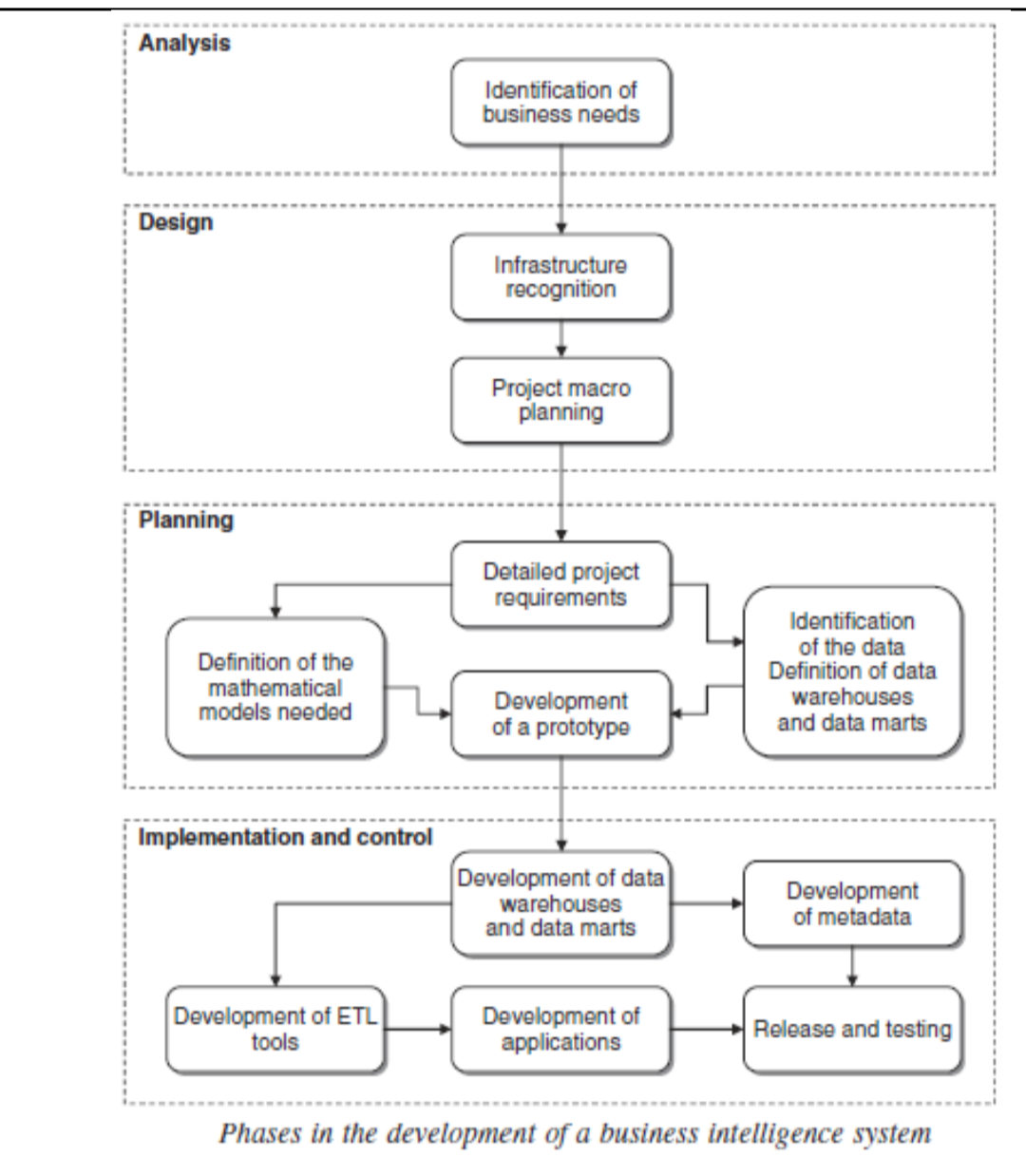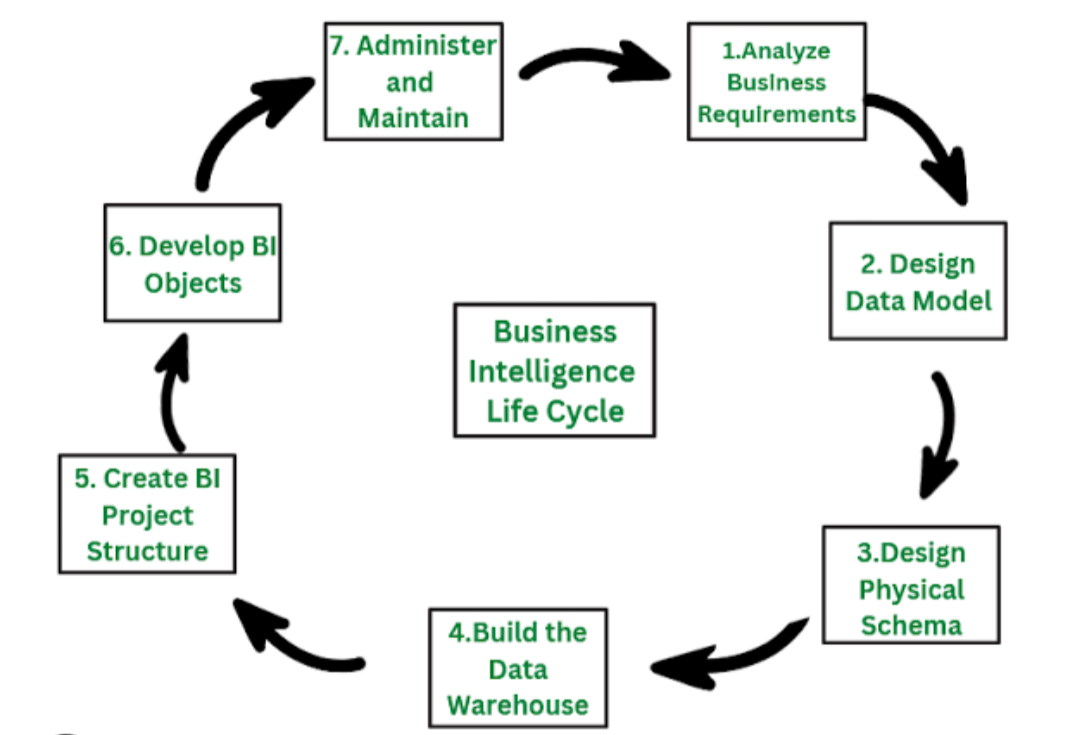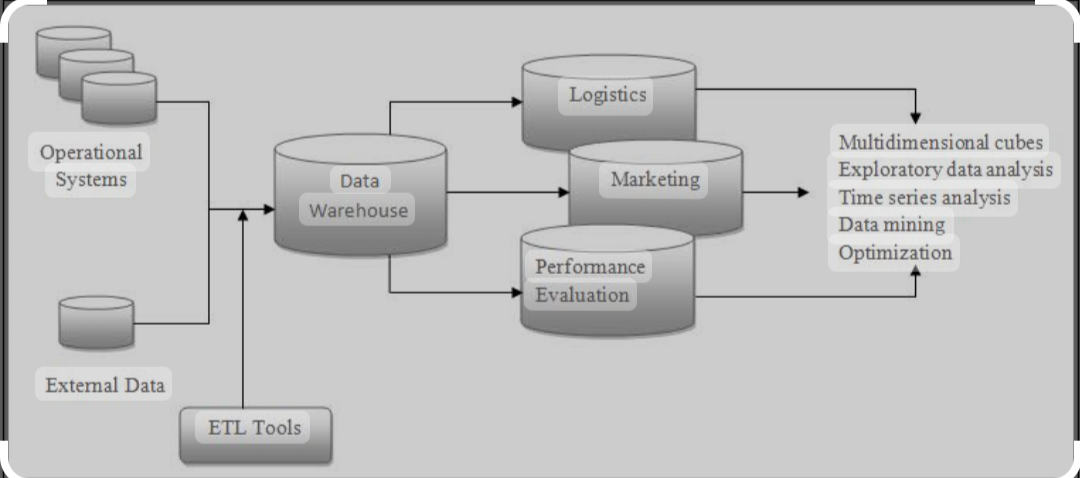Explain different phases in development of business intelligence system.
Explain different phases in development of business intelligence system.
Answer:
Phases in the development of Business Intelligence System:
Analysis:
During the first phase, the needs of the organization relative to the development
of a business intelligence system should be carefully identified.
This preliminary phase is generally conducted through a series of interviews of
knowledge workers performing different roles and activities within the
organization. It is necessary to clearly describe the general objectives and
priorities of the project, as well as to set out the costs and benefits deriving from
the development of the business intelligence system.
Design:
The second phase includes two sub-phases and is aimed at deriving a provisional
plan of the overall architecture, taking into account any development in the near
future and the evolution of the system in the mid-term. First, it is necessary to
make an assessment of the existing information infrastructures. Moreover, the
main decision-making processes that are to be supported by the business
intelligence system should be examined, in order to adequately determine the
information requirements. Later on, using classical project management
methodologies, the project plan will be laid down, identifying development
phases, priorities, expected execution times and costs, together with the required
roles and resources.
Planning:
The planning stage includes a sub-phase where the functions of the business
intelligence system are defined and described in greater detail. Subsequently,
existing data as well as other data that might be retrieved externally are assessed.
This allows the information structures of the business intelligence architecture,
which consist of a central data warehouse and possibly some satellite data marts,
to be designed. Simultaneously with the recognition of the available data, the
mathematical models to be adopted should be defined, ensuring the availability
of the data required to feed each model and verifying that the efficiency of the algorithms to be utilized will be adequate for the magnitude of the resulting
problems. Finally, it is appropriate to create a system prototype, at low cost and
with limited capabilities, in order to uncover beforehand any discrepancy
between actual needs and project specifications.
Implementation and control:
The last phase consists of five main sub-phases. First, the data warehouse and
each specific data mart are developed. These represent the information
infrastructures that will feed the business intelligence system. In order to explain
the meaning of the data contained in the data warehouse and the transformations
applied in advance to the primary data, a metadata archive should be created, as
described in Chapter 3. Moreover, ETL procedures are set `out to extract and
transform the data existing in the primary sources, loading them into the data
warehouse and the data marts. The next step is aimed at developing the core
business intelligence applications that allow the planned analyses to be carried
out. Finally, the system is released for test and usage.




Comments
Post a Comment